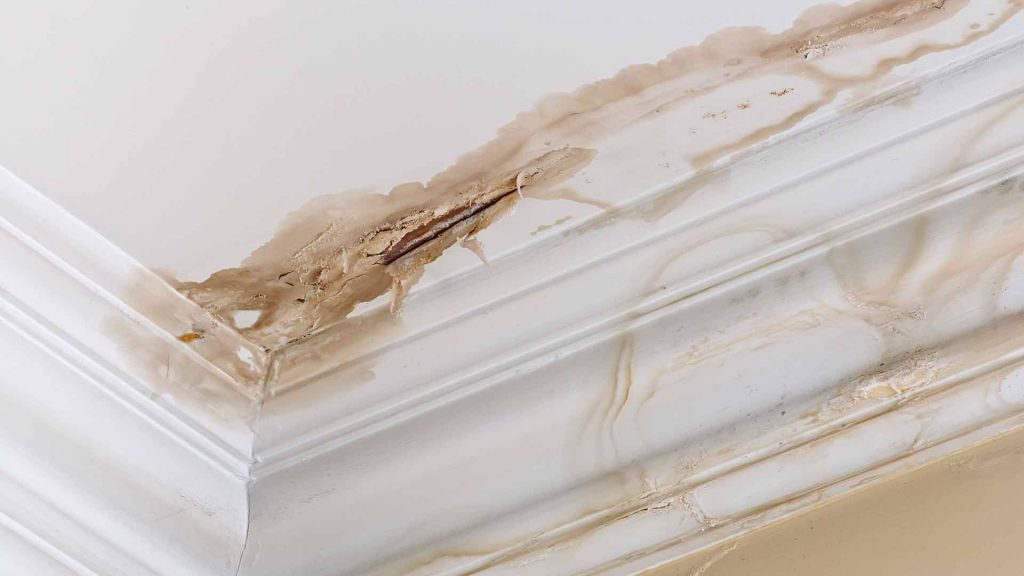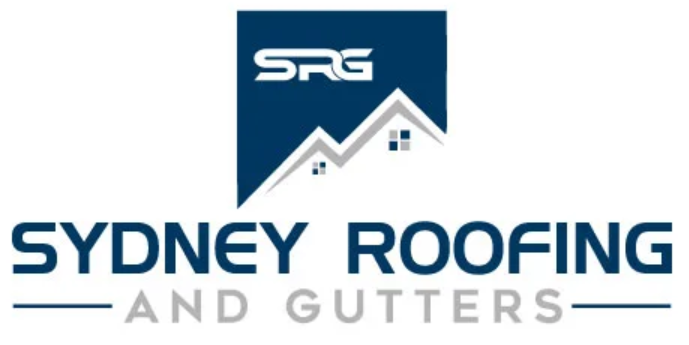WHAT CAUSES ROOF LEAKS?
Finding the source of your roof leaks is like finding that mouse in the kitchen: you’re glad you did, but now you have to deal with it. The good news? Roof leaks don’t tend to run from you.
The bad news? Roof leaks can cause a lot more damage to your home if you don’t catch and fix them in time.
You know that roof leaks can’t, and shouldn’t be ignored, because of the consequences to your wallet, safety, and time; you want it fixed and done with.
Let’s talk about the causes of roof leaks, detecting roof leaks, and repairing roof leaks

Why Do You Need to Stop Roof Leaks
Very quickly, let’s go over why you shouldn’t delay fixing that roof leak. No matter how small or insignificant the leak may seem to the eye, a leaking roof is a very serious problem. What you see may only be surface level compared to what’s actually happening behind your walls or in the lining of your roof.
A leaking roof is not something you can put off until you have the time to address it. Water getting into places it’s not designed to be can lead to multiple disasters. Water can rot foundational components of your home and lead to critical structural failure causing loss of life or overwhelming financial stress.
Water can travel along pathways and come into contact with electrical components within your walls leading to fires or shock hazards. Water can simply create moist pockets for mould to grow leading to health hazards for you and your family. Whatever the case may be, you need to take any roof leak very seriously.
How To Find Roof Leaks
Finding your roof leaks happens in two steps, you usually notice the signs or symptoms of a roof leak; then, it’s all a matter of finding the source.
How to Spot the Signs of a Roof Leak
There are many signs to watch out for if you suspect you may have a roof leak. Depending on the source of the leak, you may anticipate seeing the effects during heavy rains, but end up disappointed. It may take time after a period of heavy rains for signs to show themselves.
Anyhow, here are some things to watch out for that may indicate you have a leak:
- Water is dripping from the roof or walls
- Walls are covered in water streaks
- Paint blistering–peeling off the walls (not always a sign, but one to watch out for)
- Spots showing on the ceiling or walls
- Roof shingles are buckling, curled or cracked
- Gutters are overflowing
- You can hear the sound of dripping water somewhere in your home
- You can smell a dampness in the air
- Visible mould
- Visible rot along the roofing (rafters, beams) or walls (especially the baseboards)
How To Find the Source of the Leak
In general, these are the problem areas you should be considering when detecting roof leaks. Roof leaks are likely to originate at the seams of your home; where two separate surfaces or materials join.
If safe to do so, explore these areas of your roof:
- Chimney
- Roof vents
- The intersection between your fascia and roof sheathing
- Gutter
- Natural angles in your roof’s architecture
Non-seam related locations for the origins of roof leaks may be:
- Any valleys of rain on the roof caused by heavy downward pressure over time by rain and snow
- Improper nail positions on shingles
- Damage caused by debris
- Natural rot, decay, or wear-and-tear of roofing components
Now that we have a general strategy out of the way, let’s get into specific causes of roof leaks.
An Ageing Roof
One of the most common culprits of a leaking roof is ageing materials. Over time, it’s very normal for roofing materials to wear with age and become more vulnerable to damage and water infiltration. If you find that your roof has sprung a leak recently, consider the age of your roof and whether or not ageing materials could have something to do with weakened materials.
If you’re not confident in assessing the health of your roof, please don’t hesitate to call a professional roof contractor.
Depending on the type of roof you have, it may be time to consider repairing, replacing or restoring your roof. This could mean anything from the roofing material–shingles, tiles, metal–to the roof foundation itself–roof deck, rafters, truss.
Improper Installation
Depending on who installed or repaired your roof, poor craftsmanship or negligence may be the reason your roof has sprung a leak.
Unfortunately, as a roofing company in Sydney, we have had to make our fair share of repairs to bad roofing jobs. Improper or poor installation is one of the most common reasons for a faulty roof or a sprung leak. This is why it is so imperative to work with a roofing contractor that you know is experienced, qualified, and trustworthy.
You’ll want to speak with a few roof contractors to get a proper assessment of the health of your roof. If it’s determined the cause was an improper installation, you might be able to leverage the home warranty insurance all roofing contractors are required to purchase before starting work on installing or repairing construction jobs.
Clogged Gutters
One of the easiest ways to cause a roof leak on your property is to neglect your gutters. Cleaning out and maintaining your gutters may seem like a mundane chore, but unclogging and regular maintenance can actually go a long way in keeping your property safe.
When you properly care for and maintain your guttering, you provide excellent rainwater drainage and ultimately protect your roof–and if you have neighbours, their yards–from water infiltration. Rarely do you need to hire a professional for house gutter cleaning; maybe for larger properties. Simply use a ladder and carefully unclog the entirety of your gutter.
Faulty Flashing
Roof flashing is the thin material that professional roofers use to direct water away from critical areas of the roof, typically where roofing planes meet another surface.
Flashing is installed around roof accessories, like skylights, chimneys, or vents. It’s also installed at every intersection of your roof, providing a layer of weatherproofing for any uneven surfaces.
If the roof flashing becomes worn, damaged, faulty or loose, it will no longer be able to prevent water from seeping into joints and holes in the roof.
Skylights
Skylights are a beautiful addition to any property. They open up a direct connection to the outside environment, but there are many things that could go wrong with them.
Improper skylight installation is a common source of roof leaks. Repairs of this type need to be handled by professional roof contractors.
More so than improper installation, debris build-up is what you’re going to find to put the most stress on your skylights. The build-up of plant or rock debris puts added pressure on the structure of your skylight and this can lead to spaces forming between the borders of your skylight.
Depending on the type and amount of debris and the structure of your property, you may be able to safely remove the build-up. Like debris, foreign elements causing damage to your skylights can create space for roof leaks.
If you notice cracks or entire breaks in your skylight, this must be handled by a professional immediately. “Patch jobs” for this extent of damage will only lead to larger costs in the future or worse, injury to you, your family, or your friends.
Broken or Missing Shingles
Whether or not you have loose, chipped, broken, or outright missing roof tiles, all of these possibilities can lead to roof leaks. If there is any damage to the undersarking–a protective layer that sits underneath your roof tiles–you’ll want to hire a professional to repair your tiles.
If your roof tiles are intact but just loose, and you’re comfortable doing so, you can avoid the labour costs associated with hiring professionals and do it yourself. In the case of complete tile replacement, you’ll be looking to hire a professional roof contractor.
Lack of Maintenance
Roofing materials are supposed to face a bit of wear and tear. Working against the harsh extremities of Australian weather, it’s not uncommon for your roof to wear down over time.
Regular maintenance of your roof can save you the time and money of larger roof repair costs in the future. One of the best ways to avoid roof leaks is to just keep up with minor repairs over time so they don’t become major repairs later.
The Chimney
If your property has a chimney, then the waterproofing flashing is likely the problem. The flashings and covering surrounding a chimney can deteriorate with time and will need regular inspections to avoid roof leaks. Some chimneys will also have hidden soaker flashings along the sides which can promote rust, leading to roof leaks.
Rust
Rust is an extremely common cause of roof leaks for metal roofing and roofing components.
Even the most robust of roofing materials can quickly deteriorate once they begin to rust; so it’s imperative you keep an eye on any rust-prone areas to prevent your roofing system from weakening.
How to Repair Roof Leaks
When you’ve determined where the leak is coming from and, if you can, where and what has been damaged and by how much, the most common step you want to take is:
Call a professional.
Even if you are experienced with home repair–especially if you’re experienced with home repair–you should call a professional licensed in leaking roof repairs.
Proper assessment of damage, estimates of costs for fixing your leaking roof, advice on insurance claims, and the corresponding repairs required, needs to be done by a team of qualified roofers.
We are the best providers of roofing and gutter cleaning services throughout New South Wales so please don’t hesitate to call our trusted team of roof and gutter experts. We’re here to help



